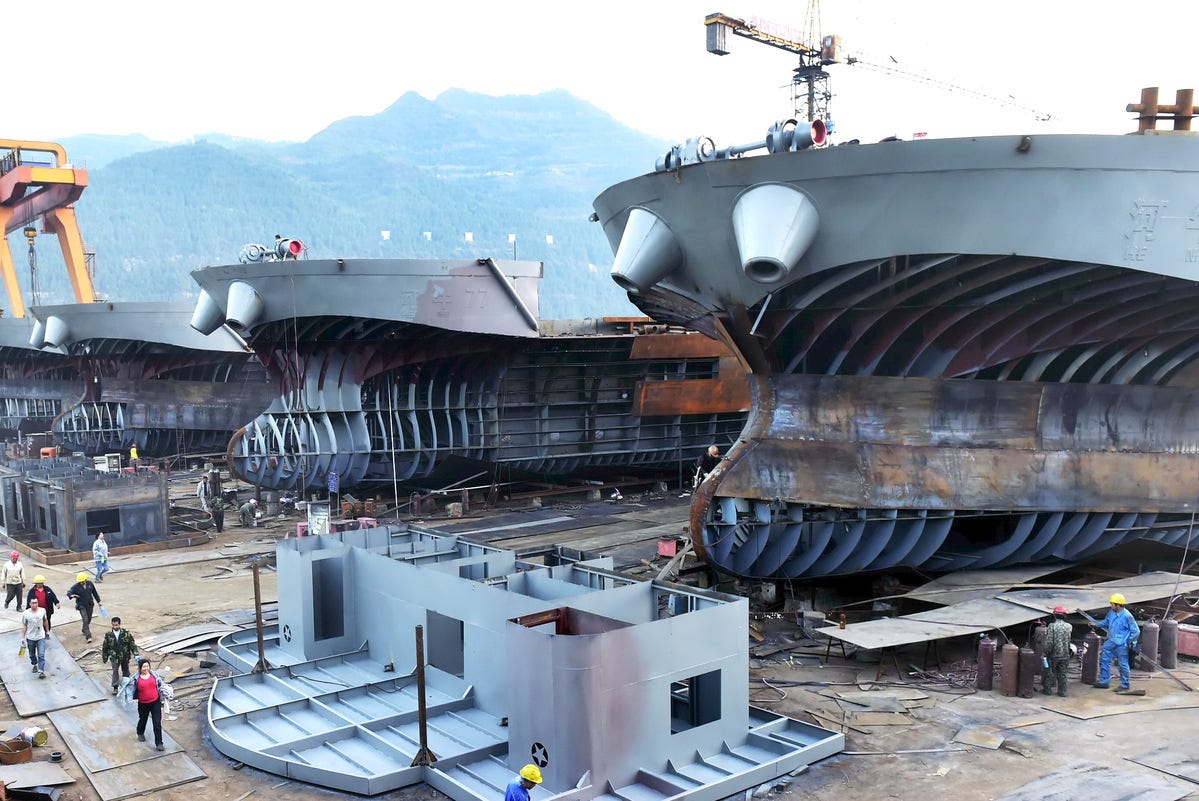What can we learn from China's shipbuilding boom?
Seatrade has posted a great article that listed the 6 factors for China's shipbuilding dominance. This is the source article: https://www.seatrade-maritime.com/shipyards/six-factors-that-enabled-china-to-dominate-global-shipbuilding
The following is a summary of the article (thanks to Grok):

Chinese yards captured around 75% of all new orders and in sectors such as dry bulk and container shipping the share of contracts was around 80%. - Adam Kent, Managing Director of Maritime Strategies International (MSI)
China’s dominance in global shipbuilding, a position it has solidified over the past 25 years, stems from a combination of strategic advantages outlined 25 years. The March 28 2025 Seatrade Maritime News article by Marcus Hand provided an overview and insights. In 2000, China accounted for less than 10% of global shipyard output; today, it leads the world.
6 Factors from the Seatrade Article
Gary Kent of Maritime Strategies International, speaking at Marintec China in December, identified six key factors for China's shipbuilding growth.
Government Support: Shipbuilding is a strategic industry in China, backed by regional and national governments, sustaining yards through downturns like 2012-2016.
Lower Pricing: Chinese yards undercut Japanese and Korean competitors by double-digit percentages, initially sacrificing quality but closing the gap over 15 years.
Design and Equipment Flexibility: Unlike Korea’s standardized designs, Chinese yards offer customization, though recent order surges have slightly reduced this edge.
Broad Range of Ship Types: China has moved beyond bulk carriers to complex vessels like cruise ships, LNG carriers, and container ships.
Increased Productivity: A construction downturn redirected skilled workers (e.g., welders) to shipyards, boosting output, with reactivated yards delivering vessels six months early.
Financial Support: Domestic banks provide substantial backing, a shift from European dominance pre-2009.
Other factors
On top of the above, I would like to add other factors, including Supply Chain and Materials.
Supply Chain Advantages: China’s integrated, localized supply chain for steel, engines, and electronics reduces costs and delays. As the world’s top steel producer (over 1 billion metric tons annually), it ensures a cheap & reliable supply. The proximity of suppliers to coastal hubs like Dalian & Shanghai streamlines logistics and improves its lead time. This self-sufficiency shielded China from global disruptions like those during COVID-19.
Materials Advantage: Dominance in rare earths (over 60% of global production) supports advanced ship tech, while leadership in battery and fuel cell production aids green shipbuilding (e.g., methanol-powered vessels). Improved material quality over time has also broadened market appeal.
On top of supply chain and material advantages, other factors drive China's shipping boom.
Domestic Demand: As the world’s largest exporter and a major importer, China’s shipping needs sustain its yards, enabling economies of scale.
Technological Advancements: Investments in automation, AI design, and robotics have narrowed the gap with Japan and Korea, fueled by state R&D and foreign partnerships.
Workforce Scale and Cost: A vast, affordable labor pool, bolstered by vocational training, keeps costs low and capacity high.
Strategic Port Infrastructure: Subsidized deep-water ports and shipyard facilities enhance efficiency and delivery speed.
Export Incentives: Tax breaks and subsidies align with the Belt and Road Initiative, boosting competitiveness.
Conclusion
Government support secures materials and supply chains, lower pricing leverages cheap steel and labor, and productivity ties to workforce and logistics. Yards like Jiangsu Yangzijiang used local resources to deliver containerships faster and cheaper than rivals, capturing market share post-pandemic. These elements explain how China has outpaced competitors in scale, speed, and adaptability.
The above is a good guide showing how countries can turn around their domestic manufacturing. The more we work together, the greater value we can create together.
